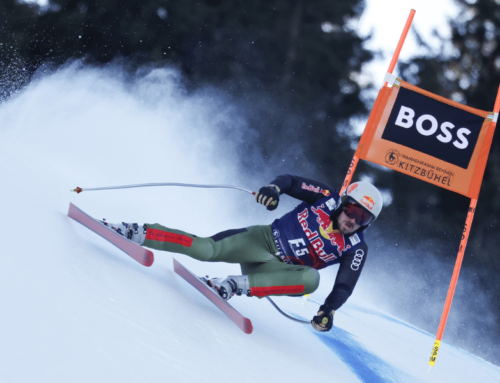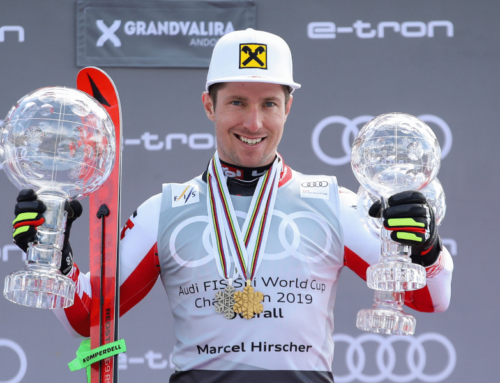Loveland Ski Club Finds a New Perspective on Ski Racing
This spring Loveland Ski Club took the FIS group to Norway to get a refreshing perspective on ski racing and see a different part of the world. This marks the first time we took athletes to train and race in Norway and we hope to return as we learn more about the opportunities in the region. Our mission was stated by Men’s FIS Coach Brett Jacobson thusly: “We created the Norway Race Project to introduce LSC athletes and coaches to one of the most successful alpine skiing nations of all time. Norway is currently leading the stimulus in motor learning and skill acquisition. Is what they’re doing unlike what we desire to do at LSC?”

While we were there, we asked the athletes to tell us what made them turn their heads and what made them think, “Wow, that’s really cool!” By the end of the trip, our team had gathered that the successes and the smiles expressed by the Norwegian skiers were reflections of the athletes’ ownership of their sport, their team, and their race. Here is what LSC athletes had to say about their experience.
Jenna Sheldon pointed out: “The environment is so intense in a positive way. It makes me bring more intensity too. A huge part is their [The Norwegian athletes’] starts. Their starts are so aggressive and it encourages me to bring the same intensity, if not more.” All of Loveland’s athletes were similarly struck by the fire they saw in the eyes of their Norwegian counterparts.

Ben Andrews noted the following while reflecting on his own race-day practices: “The major thing I have noticed is an incredibly high level of focus. Focus is an incredibly important part of the mental aspect of skiing, but I feel like we underutilize it in the U.S. That’s not to say that we don’t focus at all, but I feel that we could do much better. I, for one, usually only fully focus during the “prep” part of race day. I would do my warm-up runs focused, inspection focused, my at-start warmup focused, and my race focused, but I would spend the rest of the day just kind of going through the motions. This sharply contrasts with the vibe here.”
Julia Wordley explained the differences between what she saw in Norway and what she experienced back home: “In America, I’ve noticed a lot of rushing during training—racing to be first on the chair, cutting people in line, or trying to get more runs than someone else. Here people click out and take time to fully warm up and activate, then hop in line. Additionally, they wait for people to warm up in front of them and click out of their skis and warm up themselves. The Norwegian athletes weren’t the first ones on the lift, despite being out there before it opened. Instead, they warmed up together for about 15-20 minutes before heading up.”
Maia Andrews had this to say about the teamwork she observed: “They are very good at being a true team. They truly want each other to succeed and are always hyping each other up in the starts and helping each other warm up. Everyone seems to want to be out there. They all love skiing so much and it’s very clear that they are out there to improve; they aren’t fixated on results and times.”

Expanding on Maia’s point, Noelle Edelman said: “The athletes rely on each other to succeed. We would always see everyone tuning as a team, and a few times, I was on the porch observing that the attitude wasn’t just ‘everyone looks after themselves.’ They were all asking each other for feedback, like if their skis seem sharp enough…et cetera.”
Jessie Ferguson remarked: “The Norwegian athletes seem to have been given a high level of accountability on and off the hill. I haven’t seen any coaches doing the inspection with the athletes except for brief check-ins in certain places or at the bottom, so the athlete is responsible for making their race plan and figuring out what they need to do and where they need to be so they can ski as fast as possible when the time comes.”
Nicole Wordley witnessed the following: “I think the most interesting thing I observed was while we were in the lodge there was this group of three girls probably around ten years old. They were just in there eating lunch, watching and analyzing videos. For thirty minutes they stopped, talked, rewound, and slowed down their videos. Probably the biggest difference I noticed was that from such a young age kids are already much more dedicated and disciplined to the sport. By the time they are older, these habits are already ingrained in them, which is what creates such a different racing environment. Everyone is focused and generally more positive, and it seems that everyone genuinely likes skiing.”

Loveland’s athletes gravitated towards examples of the Norwegian skiers owning it and loving it. So the question remains, how can we as coaches and staff empower these young people to do the same, discovering the inextricable link between hard work, teamwork, and enjoyment in sport and life? A challenge that will never cease to confront us, but it is one we at LSC are prepared to face, and we challenge anyone reading this to do the same. The journey of these athletes is remarkable and inspirational.
~Alex Skladanowski, Loveland Ski Club.





















